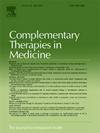Effects of acupuncture-related intervention on chemotherapy-induced peripheral neuropathy and quality of life: An umbrella review
IF 3.3
3区 医学
Q1 INTEGRATIVE & COMPLEMENTARY MEDICINE
引用次数: 0
Abstract
Background
Numerous studies have explored the role of acupuncture-related treatments in alleviating chemotherapy-induced peripheral neuropathy (CIPN) and improving the quality of life for patients with cancer, resulting in mixed findings. This umbrella review aimed to synthesize existing systematic reviews (SRs) to deliver an updated assessment of the certainty of evidence concerning the effects of acupuncture-related treatments on CIPN and quality of life among a diverse group of patients with cancer.
Methods
This umbrella review considered eligible SRs published on one of nine electronic databases between inception and August 2024. It included adult patients with cancer of any stage who were undergoing chemotherapy. Interventions encompassed acupuncture, either alone or with electrical stimulation or moxibustion, and transcutaneous electrical acupoint/nerve stimulation (TEAS). The outcomes analyzed were changes in CIPN, nerve conduction velocity (NCV), and quality of life.
Results
The outcomes were evaluated using data obtained from 14 SRs that demonstrated moderate to high methodological and reporting quality. The findings showed that acupuncture (either alone or combined with electrical stimulation) and TEAS effectively alleviated CIPN symptoms, reduced CIPN pain, improved NCV, and enhanced quality of life.
Conclusion
The findings of this umbrella review indicate that these benefits were usually noticeable by the second week of treatment, persisted until the sixth week, and then gradually declined. Sensory nerve recovery occurred more rapidly than motor nerve recovery, often within 1.5 weeks. Although acupuncture combined with moxibustion or acupressure also enhanced patient outcomes, there was insufficient information available for further study analysis.
针刺相关干预对化疗引起的周围神经病变和生活质量的影响:综述。
背景:大量研究探讨了针灸相关治疗在缓解化疗诱导的周围神经病变(CIPN)和改善癌症患者生活质量方面的作用,结果好坏参半。本综述旨在综合现有的系统综述(SRs),对不同癌症患者中针灸相关治疗对CIPN和生活质量影响的证据确定性进行最新评估。方法:本综述考虑了从成立到2024年8月在9个电子数据库之一上发表的符合条件的SRs。研究对象包括正在接受化疗的任何阶段的成年癌症患者。干预措施包括单独或结合电刺激或艾灸的针灸,以及经皮电穴位/神经刺激(TEAS)。结果分析了CIPN、神经传导速度(NCV)和生活质量的变化。结果:使用从14个SRs获得的数据对结果进行评估,这些数据显示了中等到高的方法学和报告质量。结果表明,针刺(单独或联合电刺激)和tea可有效缓解CIPN症状,减轻CIPN疼痛,改善NCV,提高生活质量。结论:本综述的结果表明,这些益处通常在治疗的第二周明显,持续到第六周,然后逐渐下降。感觉神经的恢复比运动神经的恢复快,通常在1.5周内。虽然针灸结合艾灸或指压也能提高患者的预后,但可供进一步研究分析的信息不足。
本文章由计算机程序翻译,如有差异,请以英文原文为准。
求助全文
约1分钟内获得全文
求助全文
来源期刊

Complementary therapies in medicine
医学-全科医学与补充医学
CiteScore
8.60
自引率
2.80%
发文量
101
审稿时长
112 days
期刊介绍:
Complementary Therapies in Medicine is an international, peer-reviewed journal that has considerable appeal to anyone who seeks objective and critical information on complementary therapies or who wishes to deepen their understanding of these approaches. It will be of particular interest to healthcare practitioners including family practitioners, complementary therapists, nurses, and physiotherapists; to academics including social scientists and CAM researchers; to healthcare managers; and to patients. Complementary Therapies in Medicine aims to publish valid, relevant and rigorous research and serious discussion articles with the main purpose of improving healthcare.
 求助内容:
求助内容: 应助结果提醒方式:
应助结果提醒方式:


